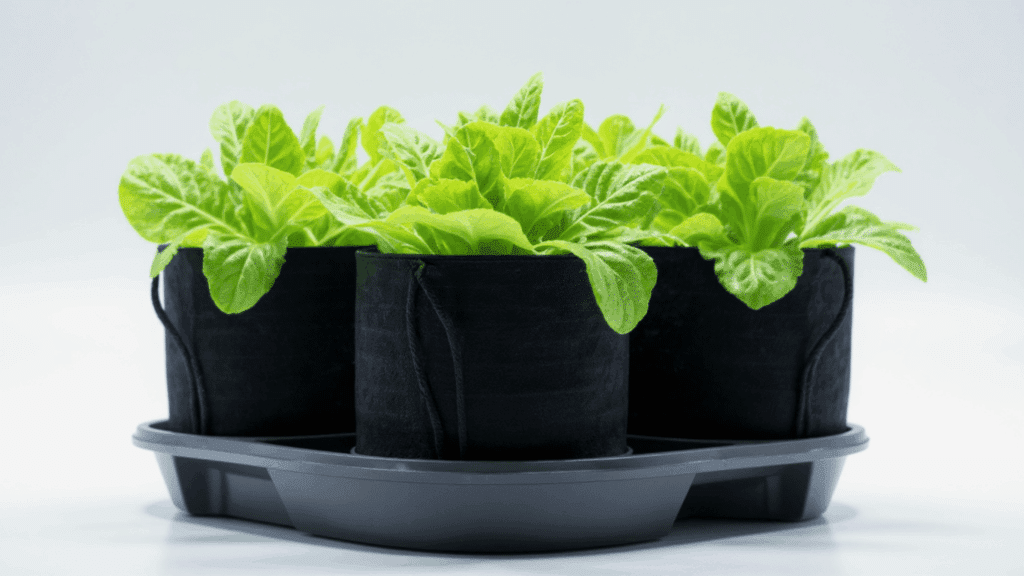Growing fresh lettuce at home sounds tricky, right?
Most people think they need a backyard garden or fancy equipment to grow their own greens. Anyone can grow crisp, delicious lettuce indoors with just a few simple supplies.
Indoor lettuce growing has become popular for good reason. It saves money, guarantees fresh salads year-round, and requires less space than most houseplants.
This guide breaks down everything needed to start growing lettuce indoors.
From choosing the right varieties to harvesting that first crunchy leaf, readers will learn exactly how to turn their kitchen into a mini lettuce farm. Ready to grow some greens?
Can You Grow Lettuce Indoors?
Absolutely. Lettuce ranks among the easiest vegetables to grow inside homes.
Unlike tomatoes or peppers, lettuce doesn’t need intense sunlight or massive containers. It thrives in cool indoor temperatures that most people already maintain.
The shallow root system means small pots work fine. Growth happens fast, too; harvest arrives in just a few weeks from seeding. Lettuce actually prefers the stable conditions found indoors over unpredictable outdoor weather.
Apartment dwellers, basement growers, or anyone lacking yard space can successfully grow fresh greens.
Basic equipment like grow lights and containers costs less than monthly grocery store salad purchases. Indoor lettuce growing works for everyone.
Best Lettuce Varieties for Indoor Growth
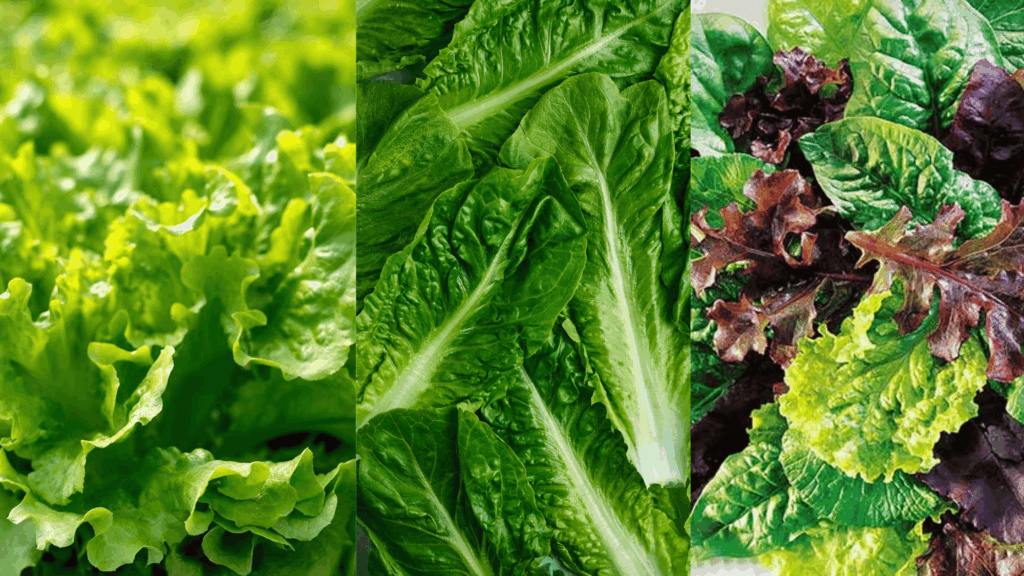
Not all lettuce types work well indoors. Some need too much space, while others take forever to grow. Several varieties thrive in indoor conditions.
1. Loose-leaf lettuce tops the list for beginners. Varieties like Oak Leaf, Lollo Rosso, and Buttercrunch grow fast and don’t need much room. They’re ready to harvest in just 30-45 days.
2. Romaine lettuce works too, though it takes a bit longer. Little Gem and Mini Romaine fit perfectly in small spaces.
4. Mesclun mixes offer variety in one go. These seed blends contain different lettuce types and greens, creating a colorful salad bowl right at home.
Avoid iceberg lettuce for indoor growing. It demands too much space and light. Stick with compact, quick-growing varieties for the best results.
Ideal Growing Conditions: Temperature, Light, Soil, and Humidity
Lettuce needs specific conditions to flourish indoors. Getting the basics right makes the difference between wimpy greens and restaurant-quality leaves.
Temperature: Lettuce prefers cool conditions, between 60-70°F. Temperatures above 75°F cause bolting, making leaves taste bitter. Keep plants away from heating vents and maintain a consistent room temperature for steady growth.
Light: Indoor lettuce needs 12-16 hours of light daily. Natural sunlight works, but grow lights ensure consistent results. Position lights 6-12 inches above plants. Without enough light, lettuce grows tall and weak.
Soil: Use well-draining potting mix, not garden soil. Lettuce roots need oxygen and a moisture balance. A good mix contains peat moss, vermiculite, and compost. pH should stay between 6.0 and 7.0 for the best nutrient absorption.
Humidity: Maintain 40-60% humidity levels for healthy lettuce. Too much moisture invites mold and disease. Too little causes leaf edges to brown. A simple humidity monitor helps track conditions and adjust accordingly.
Step-By-Step Guide to Growing Lettuce Indoors
Following these simple steps ensures a successful harvest for growing lettuce indoors. From seeds to salad, here’s the complete process explained clearly.
Tools & Materials Required
| Item | Purpose |
|---|---|
| 1–5 gallon Smart Pots | Indoor growing containers |
| DIY seed-starting mix / sterile potting mix | Soil for seed germination |
| Lettuce seeds | Main greens for the salad station |
| Spray bottle | Moistening the soil surface |
| Grow lights (1500–3000 lumens, 4500–6500K) | Proper lighting for lettuce |
| Clamp light or shop-light setup | Light placement options |
| Timer | Automates daily light cycle |
| Trays/drip pans | Bottom watering |
| Liquid fertilizer | Weekly feeding for healthy growth |
Pest-Control Tools:
- Sticky traps: Useful for catching flying pests like fungus gnats or fruit flies indoors without chemicals.
- Apple cider vinegar + dish soap traps: A simple, inexpensive, homemade method to lure and trap fruit flies near your plants.
- Sterile or sterilized soil: Starting with clean soil helps prevent many common indoor pest problems from developing in the first place.
Step 1: Select Containers and Prepare Your Soil Mix
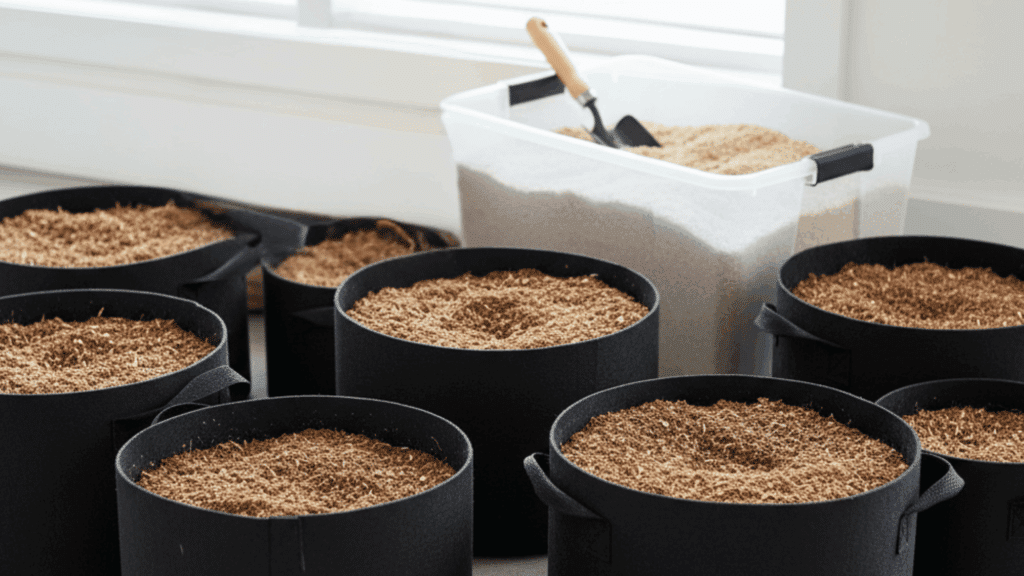
Start by picking containers that fit the available space. A 1-gallon smart pot works perfectly for small setups, while 5-gallon containers suit those wanting bigger harvests.
Fill chosen containers with sterile potting mix or a homemade seed-starting blend. The mixture should feel light and drain well, giving seeds room to sprout freely.
Keep extra soil stored indoors in a bin for quick replanting anytime without running to the store.
Step 2: Plant Lettuce Seeds Correctly for Fast Germination
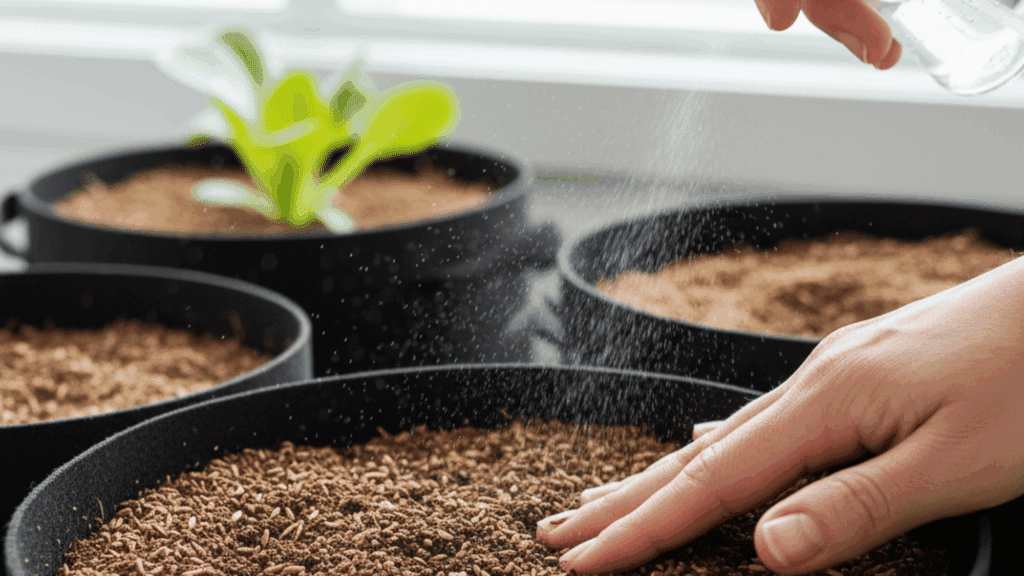
Pick reliable varieties like Bronze Mignonette or Paris Cos Romaine for the best results. Scatter seeds thinly across the soil surface, spacing them roughly half an inch apart.
Don’t bury lettuce seeds, as they need light to germinate properly. Press them gently into the soil for contact, then mist lightly with water.
Seeds typically sprout within 5-7 days when the room temperature stays below 75°F, making germination quick and predictable.
Step 3: Prevent Indoor Pests and Maintain a Clean Growing Space
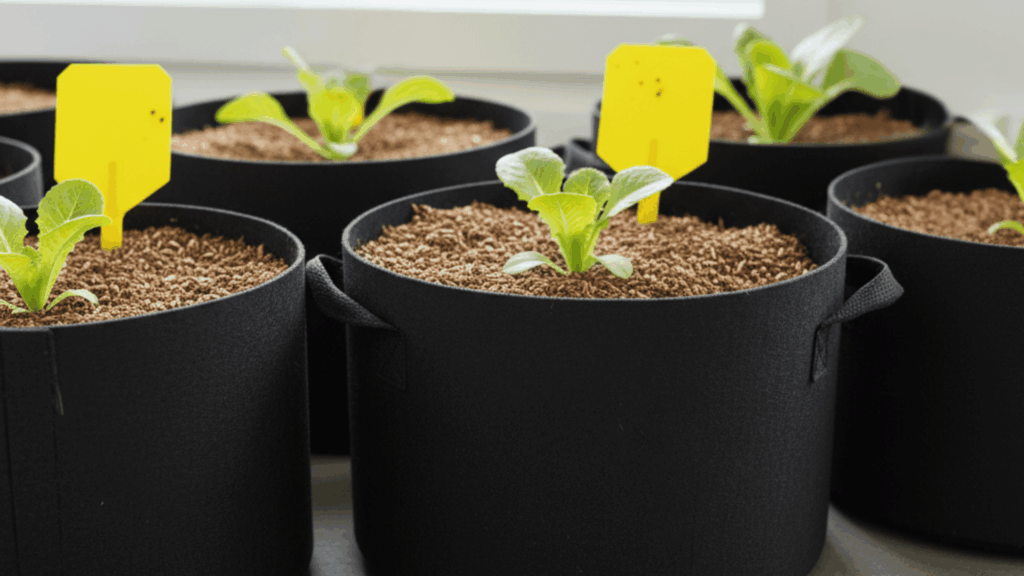
Stop pests before they start by using sterilized soil from the beginning. Heat the seed mix in boiling water or bake it briefly to kill potential pest eggs.
Set up sticky traps around growing containers to catch fungus gnats and fruit flies early. Small caps filled with apple cider vinegar mixed with dish soap also trap flying insects effectively.
These preventive steps create a pest-free environment without needing chemical sprays or harsh treatments.
Step 4: Set Up Proper Indoor Lighting to Support Strong Growth

Windowsills don’t provide enough light for healthy lettuce growth. Install LED grow lights delivering 1500-3000 lumens with daylight spectrum (4500-6500 Kelvin range).
Multi-shelf systems with shop lights work great, or use simple clamp lights attached to stable surfaces like weighted jugs.
Connect lights to automatic timers programmed for 14-hour daily cycles. This setup delivers consistent lighting without having to remember to switch the lights on and off manually each day.
Step 5: Water, Fertilize, Harvest, and Replant for Continuous Salads

Place trays under containers for bottom-watering, keeping leaves dry, and reducing fungal problems. Water approximately weekly, checking soil dryness first. Feed plants weekly with liquid fertilizer to boost leaf development.
Begin harvesting when lettuce reaches 3-4 inches tall by picking outer leaves while protecting the center growth point. This cut-and-come-again method extends production.
Start new containers every few weeks for nonstop fresh salads throughout the winter months.
Growing Lettuce Indoors Hydroponically
Hydroponic growing takes indoor lettuce to the next level. This soil-free method uses nutrient-rich water instead, producing faster growth and bigger yields.
Basic hydroponic systems like Kratky or deep-water culture work well for beginners. Plants sit in net pots with roots dangling in nutrient solution. The setup needs grow lights, an air pump for oxygen, and liquid fertilizer.
Lettuce grows 30% faster hydroponically compared to soil. Harvest comes in just 3-4 weeks. The system stays cleaner too, with no soil mess.
Start-up costs are higher than for traditional growth, but the results speak for themselves. Fresh lettuce every few weeks makes it worthwhile.
Troubleshooting Common Issues in Indoor Lettuce Growing
Even experienced growers face problems sometimes. Recognizing these common issues early prevents crop failure. Here are the mistakes that trip up most indoor lettuce growers and solutions.
- Overwatering: Soggy soil drowns roots and causes rot. Let the top inch dry between waterings.
- Insufficient Light: Leggy, pale plants mean not enough light. Increase hours or move lights closer.
- Poor Air Circulation: Stagnant air invites mold and pests. Use a small fan for gentle airflow.
- Overcrowding: Packed plants compete for resources and attract disease. Space seedlings 4-6 inches apart.
- Wrong Temperature: Heat causes bolting and a bitter taste. Keep growing area consistently cool, between 60-70°F.
To Conclude
Indoor lettuce growing changes any kitchen into a year-round salad bar. Fresh greens sit just steps away from the cutting board, ready whenever hunger strikes.
Starting small makes sense for beginners. One container provides plenty of learning opportunities without overwhelming commitment.
No more wilted grocery store lettuce or questionable pesticide residues. Homegrown greens taste better and last longer because they’re harvested fresh.
Plus, there’s real satisfaction in eating something grown with your own hands. Why wait for spring? Grab some seeds, set up those lights, and start growing today.

